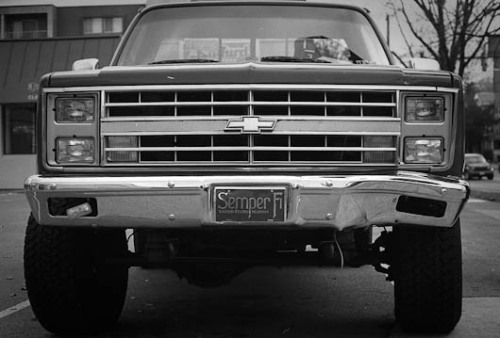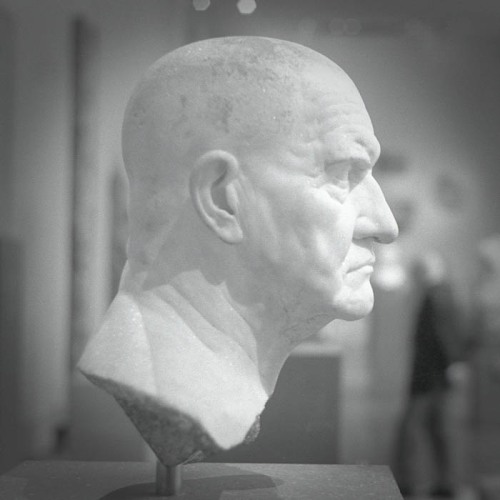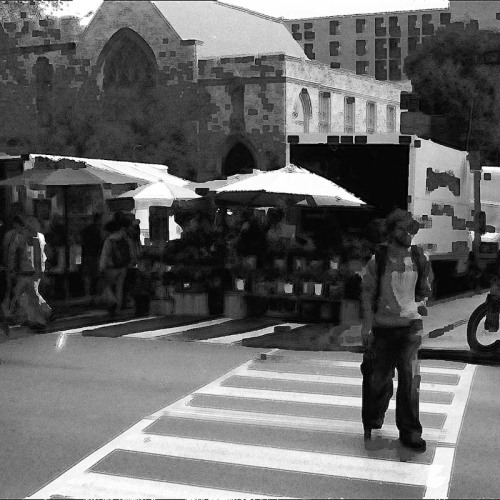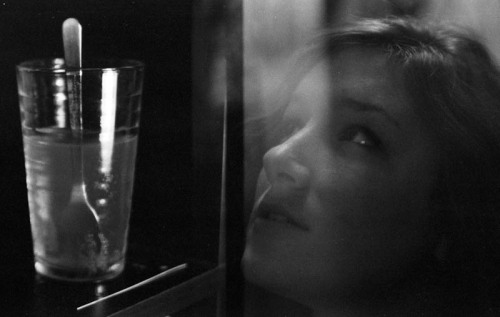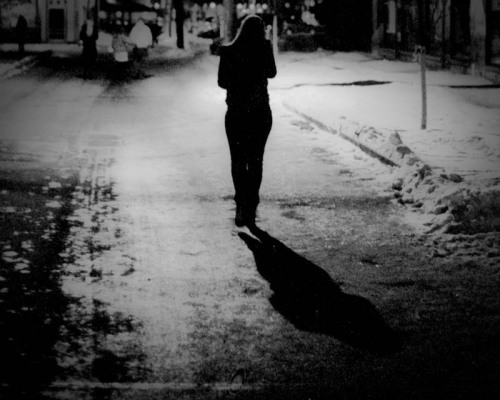
Photography is a diversion.
I was sitting in my apartment at around one o’clock last night with lots of work to do but zero motivation to do it. I decided another shot at low light 35mm was in order, so I loaded my borrowed XD5 with a fresh roll of APX400 (setting aside the roll I took out, destined for more pulling experiments) and wandered into the night. I immediately realized that, like many manual focus semi-automatic exposure cameras, the XD5’s meter consists of a scale of shutter speeds or apertures (depending on mode) with a red dot that lights up next to the metered value. This works fine in bright sunlight, but when there is no backlight in the viewfinder to illuminate the numbers, it is more or less useless. This is why aperture- or shutter-priority cameras, though capable of full manual operation, tend to be less utilitarian than fully manual cameras for this purpose. I reloaded the film into my Ricoh KR-5 Super II, which has big bright “-,” “0,” and “+” LEDs to give a reading even in complete darkness. Unfortunately, the rewind knob on the XD5, which has always made me nervous, did absolutely nothing to rewind the film (except make the telltale “click” that should mean that the leader has unattached and it’s safe to open the camera) and I ruined some of the film. Also unfortunately, I had taken the batteries out of this camera to play with the KR-10 I had borrowed (vastly inferior for the aforementioned reasons, though built a little better). I found a quarter, swapped the batteries, and stepped out into the night. Let this be a lesson to those of you who want to maintain large collections of almost working but entirely worthless old cameras.
In the fall, I had tried shooting APX400 at 800 and 1600 with really unimpressive results. Now that I have a better understanding of film speed and developing, I decided to try a roll at as close as I could get to 400 (usually 800, sometimes an indicated 400 that wassn’t a very good meter reading anyway) and develop for 800. Within ten minutes of walking back in the door, I had the film in the tank and soaking. In less than an hour it was hanging to dry. This morning, I scanned it. This was a rare burst of productivity that may never occur again.
The exposures worked better, but the fact that most of the frames were lit in the center with barely exposed dark areas at the edges made it diffcult to determine where one negative ended and another began for cutting, and made it even worse on my scanner. I ended up with some frames cut off and a few panoramas. This is one of the cut off frames. There’s a horizon and “sky” here. I may try to resurrect it later, but for now I’m pretty happy with this.
Agfa APX400 at 400-800 developed in Clayton F76+.


